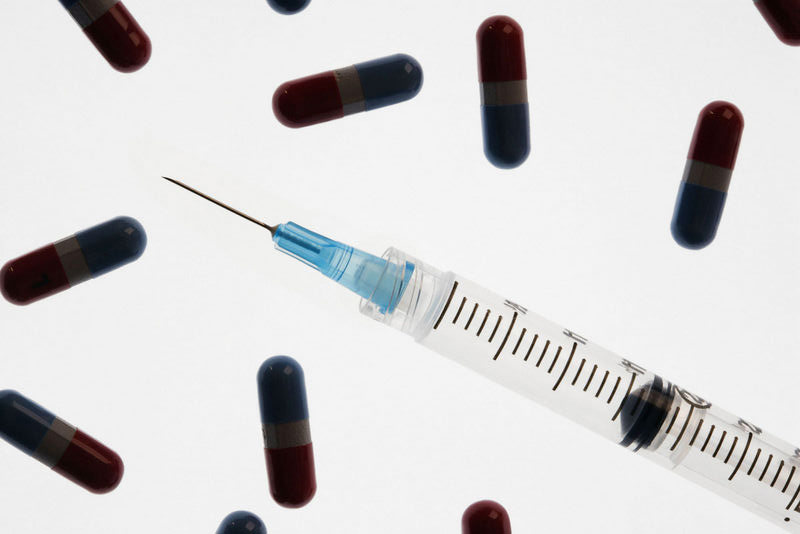
WEDNESDAY, Jan. 1, 2014 (HealthDay News) — When men are young, testosterone tends to get a bad rap, often blamed for aggressive and overly competitive behavior. But as men get older, the bad rap continues, though for a different reason.
In older men, it’s low testosterone that has captured attention.
Testosterone, the male hormone, plays a vital role in many body functions, and low testosterone levels can leave men tired, uninterested in sex, infertile and with thinning bones, according to the U.S. National Library of Medicine.
It’s also a fairly common problem in older men. As many as four in 10 men older than 45 have lower than normal levels of testosterone, according to the American Urological Association.
But, replacing lost testosterone isn’t a panacea, despite what you might have seen on TV.
“There’s been a lot of advertising, and every guy that comes in now asks about testosterone,” said Dr. Ryan Terlecki, a urologist at Wake Forest Baptist Medical Center in Winston-Salem, N.C. “They’ve been led to believe that it’s a fountain of youth, but it’s not a cure-all.”
For example, many men hope that testosterone therapy will help treat erectile dysfunction. But, Terlecki said that though testosterone is a treatment for low libido and taking replacement testosterone may increase a man’s sex drive, it’s not a direct treatment for erectile dysfunction.
Testosterone replacement also isn’t an option for men who want to preserve their fertility. That’s because when a man takes testosterone therapy, the testosterone receptors in the body tell the brain that there’s enough testosterone, and, in turn, the brain signals the testes to stop producing sperm.
Terlecki said it’s possible that sperm production could return to normal levels after testosterone therapy is stopped. But there’s no solid evidence that it will, so doctors prefer to err on the side of caution if a man believes he might still want to have children.
Men who have active prostate cancer or male breast cancer also aren’t candidates for testosterone therapy.
However, other men with symptoms of low testosterone may want to consider it. For starters, that includes men who “might notice a drop in energy and low libido,” Terlecki said.
Dr. Steven Canfield, chief of urology at the University of Texas Health Science Center at Houston, said that symptoms of low testosterone that men might notice also include “the development of breast tissue, a loss of body hair, small or shrinking testicles, no need for shaving, flushing, sweats and bone loss.”
But, he said, there are less specific symptoms, too. Men with low testosterone might also notice “a decrease in self-confidence, feeling sad or depressed, problems with sleeping, memory problems, reduction in body mass, and a decrease in work performance,” Canfield said.
All it takes to tell if a man’s testosterone level is low, he said, is a simple blood test.
Although low testosterone is common in older men, it’s not necessarily a normal part of aging. Other conditions that are common with aging, such as obesity or depression, can cause lower levels of testosterone, according to research presented at the Endocrine Society meeting in Houston this year.
Canfield said that testosterone levels can drop if testicular tissue is lost, which can happen with age. And Terlecki said that prior testicular trauma, undescended testicles and radiation treatment to the testicles also can cause lower testosterone levels. Testosterone levels can drop because of a pituitary tumor, though that’s rare, he said. And some medications, such as narcotics, can also lower testosterone levels.
Several options exist for treating low testosterone. For men who want to keep their fertility, Terlecki said, the drug clomiphene can be prescribed. In men for whom that’s no longer an issue, testosterone replacement therapy can boost testosterone levels.
Options for testosterone replacement, Canfield said, include injections, patches, a gel and implantable pellets. He said that a pill form of testosterone is available in other parts of the world, but not in the United States.
Injections are given once every two weeks, Terlecki said. The downside to this option is that injections provide a large dose of testosterone in the beginning but it drops fairly quickly.
Topical formulations, such as testosterone gel, are put on in the morning and absorbed within two to six hours and, if used consistently, provide a steady consistent dose of testosterone. “But, men have to remember to do it,” Terlecki said. “And, they have to wait while the gel dries. It may leave the area feeling a little tacky.”
Also, it’s important not to expose children, pregnant women or women who may become pregnant to the testosterone on the skin because it can alter their hormonal balance.
Patches can provide a longer-term steady dose of testosterone, but they may cause irritation, Terlecki said. And implantable pellets, according to Canfield, can provide a steady, long-acting dose of testosterone. They’re injected just underneath the skin on your backside during an outpatient office procedure.
This option is becoming increasingly popular because it lasts for four months and generally is inexpensive, Terlecki said.
Risks of testosterone therapy include an increase in the size of the prostate, water retention, worsening sleep apnea, a lower sperm count and an increase in the platelet count, which could increase the risk for blood clots, according to Canfield.
Both men agreed that testosterone therapy won’t solve all of a man’s health issues.
“The most important thing men need to know is that testosterone therapy isn’t a substitute for taking care of overall health,” Terlecki said. “A lot of men come in obese, with a poor diet and no exercise, and they want to blame low testosterone. While testosterone may play a role in their overall health, it needs to be viewed in context with these other factors.”
More information
The Urology Care Foundation has more about low testosterone.
Copyright © 2025 HealthDay. All rights reserved.

